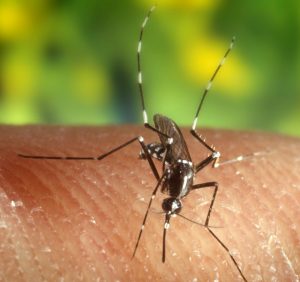Heartworm 101 – Life and Times of a Freeloading Parasite

I have a tendency to be long-winded, so I’m going to simplify this for the impatient folks out there because the message is very important. Heartworm disease kills dogs and cats. Treatment is risky and expensive. Heartworm is (fortunately) easily preventable. Therefore, all dogs and cats should be on year-round monthly preventatives.
It really is that simple. However, if you want more than just my word on that – if you want to know what heartworms are, howinfection and disease occurs, and why giving those preventatives monthly is so important – keep reading.
What Are Heartworms?
Heartworm is the common name for Dirofilaria immitis, a large roundworm parasite very similar to those disgusting white intestinal worms that dogs and cats become infected with from time to time. While the commonness of infection varies from place to place, heartworm has been diagnosed in all 48 continental states and many other countries as well. Their life cycle is rather complicated, but a basic understanding goes a long way toward both understanding the disease and making sense of veterinary recommendations about preventatives.
Dogs are the natural host for adult worms, which infect the large arteries of the lung, and in heavy infections are found in the heart itself. Males and females mate to produce larvae called microfilaria (i.e., small threadworms). These microscopic worms live in the bloodstream for up to two years, waiting to be sucked up by another disgusting little critter – mosquitos. This triggers the larvae to mature through a couple more stages, eventually winding up back in the salivary gland of the mosquito – just in time to get injected back into another unsuspecting dog. Over the next six months, those microscopic larvae will travel to the vessels of the lungs and mature into adult worms that may be nearly a foot long, ready to mate and start the cycle all over again.
How Do Heartworms Harm Pets?
It doesn’t take a medical degree to realize that bunch of worms clogging up the bloodstream is unhealthy. Indeed, when many worms are present they interfere with bloodflow into the lungs and force the heart to work harder, leading to classic signs such as exercise intolerance and coughing. The severity of such problems are largely a function of how many worms are present – pets with three or four worms may show no overt signs, while those with dozens will likely be in rough shape.
Simple mechanical blockage of the heart and vessels is far from the only problem, however. For starters, the immune system is really, really not a fan of freeloading parasites. Significant inflammation can result in the lungs from both adult and juvenile worms; indeed, research is pointing toward juvenile worms as being a major cause of feline asthma syndromes. In response to the worms, the immune system produces massive amounts of antibodies – proteins directed at identifying and helping destroy invading microorganisms. Unfortunately, for all its bluster the immune system is pretty impotent to deal with the worms, and winds up doing much more harm than good. The arteries the worms live in thicken from inflammation, and all those antibodies wind up settling out in small vessels – particularly in the kidneys, where they may cause a fair bit of damage.
One of the most dangerous complications of heartworm disease happens when the worms die. Dead adults get pushed downstream until they lodge in smaller vessels of the lungs, forming an embolus that cuts off blood to that part of the lungs until the body can break it down. Enough of those dead worms in the wrong place can be fatal. Furthermore, once adults set up shop in the cadiovascular system they begin pumping those tiny microfilaria into the bloodstream – potentially millions of them. Strangely, these don’t seem to cause much trouble while alive; however, they turn the pet into a walking infection source for every mosquito in the area, which in turn may infect other pets. When the larvae die, though, the dead parasites trigger the immune system and cause microscopic abscesses where they land. This probably isn’t a big deal when most of them are alive, but it is a major concern when treating pets with the disease, as millions dying at once can potentially send an animal into anaphylactic shock. Both of these are primary reason why infected animals need to be under strict exercise restriction, and why treatment must be undertaken with close monitoring at the hospital.
So, that’s what heartworms are and what they do. In the next article, we’ll talk about preventatives – what options are out there, why giving them every month is important, and about the benefits they provide aside from heartworm protection. We’ll also talk about screening tests, particularly why we recommend yearly testing for all pets – even those on preventatives.
